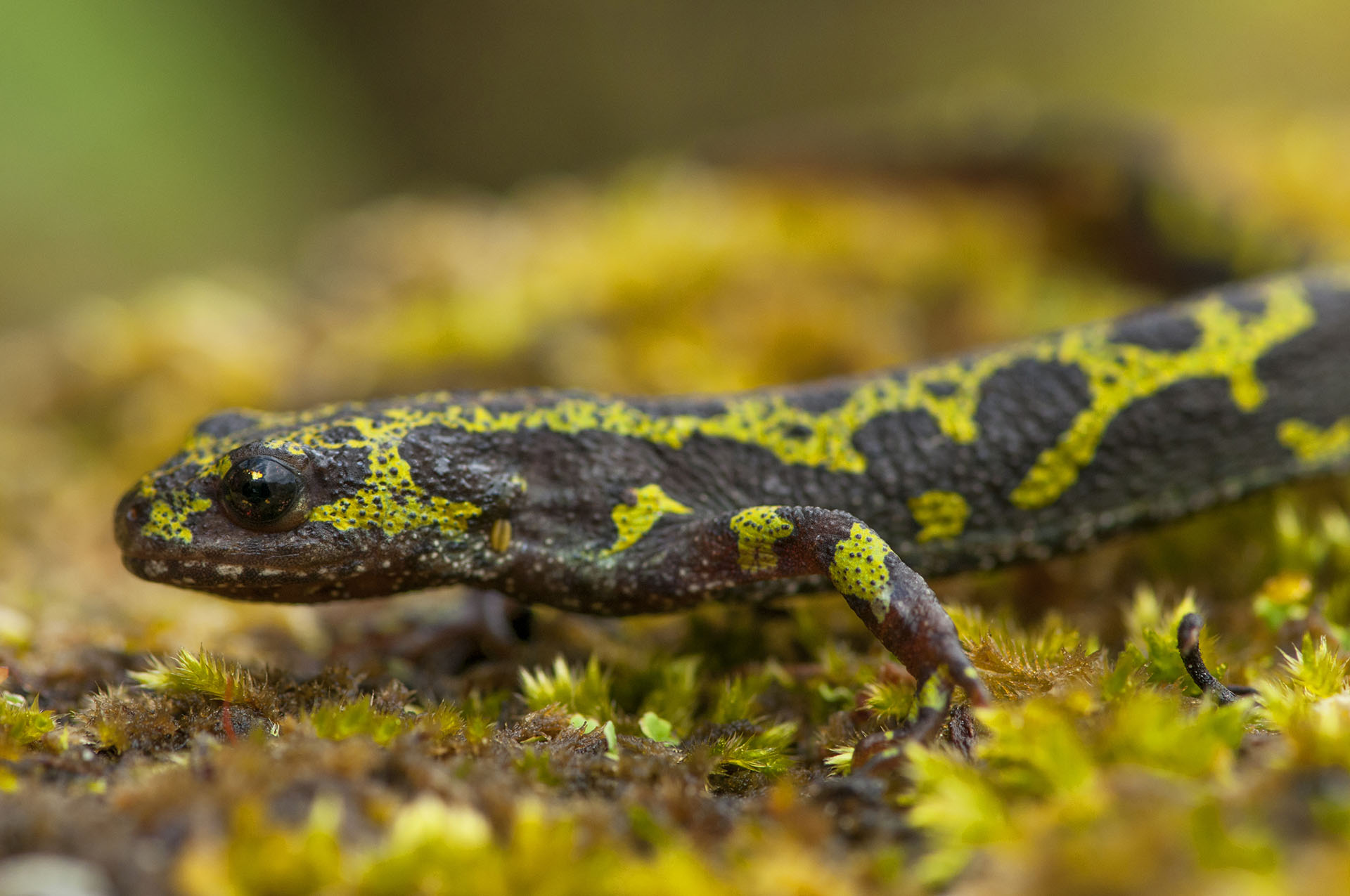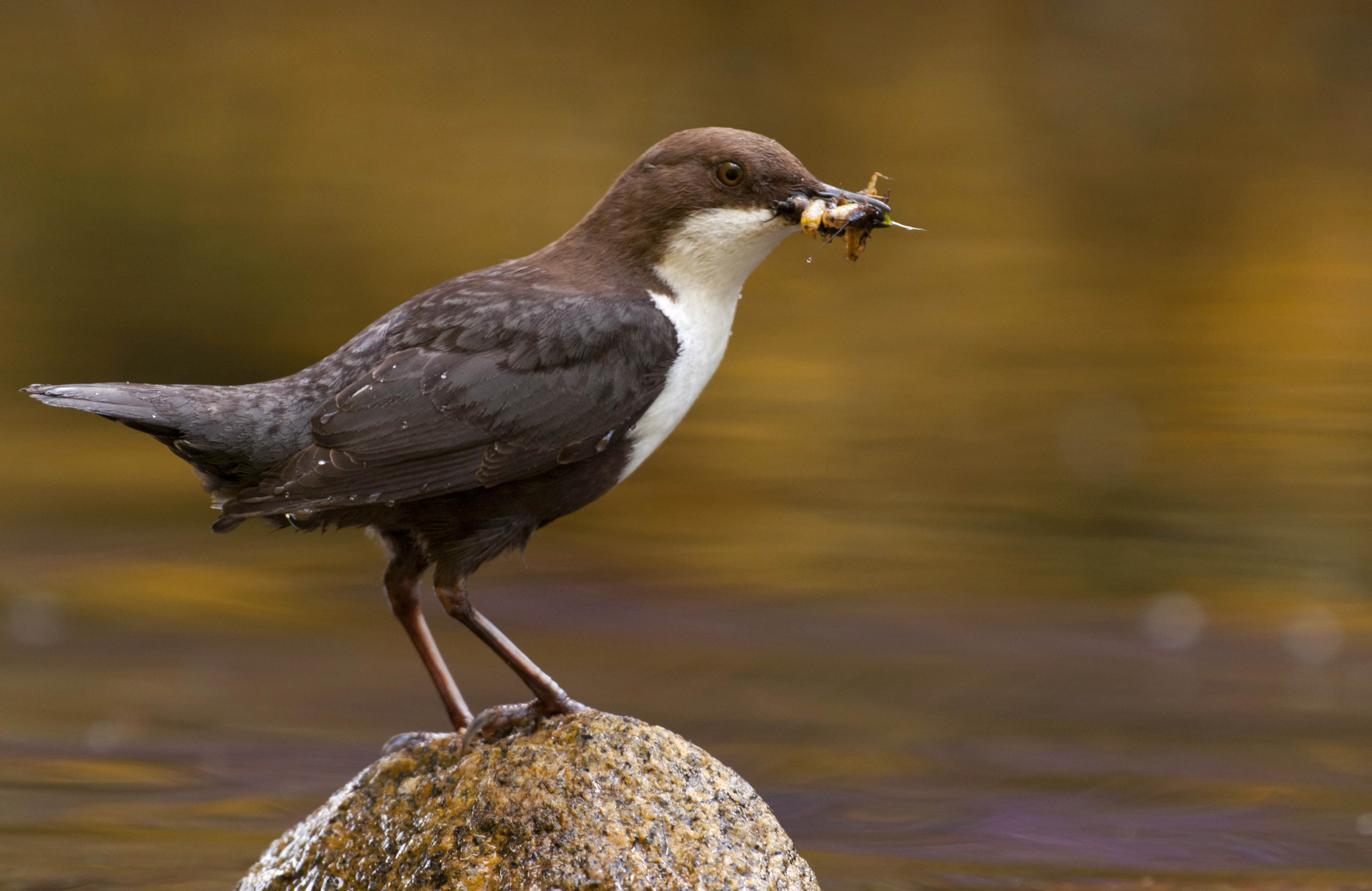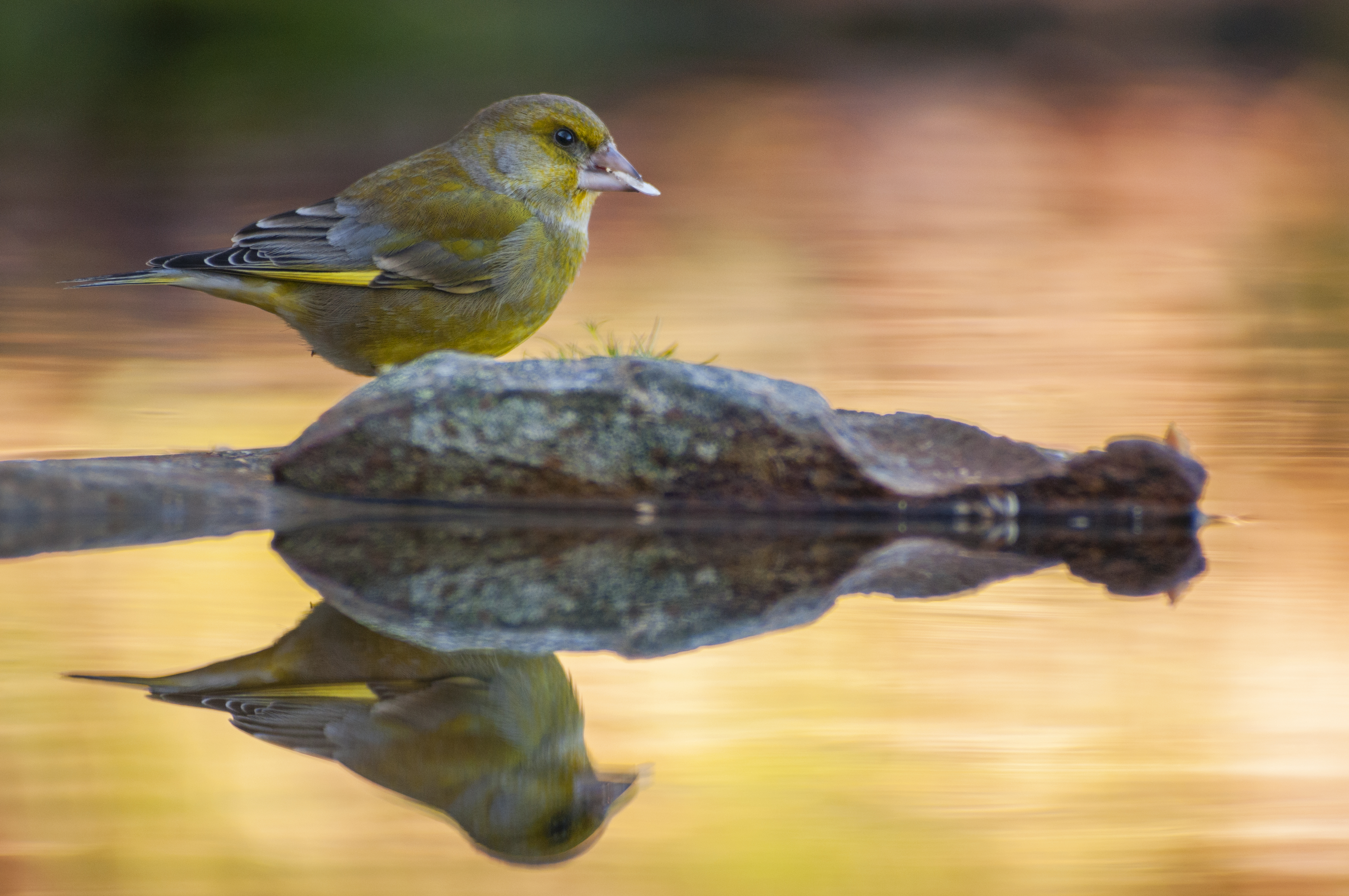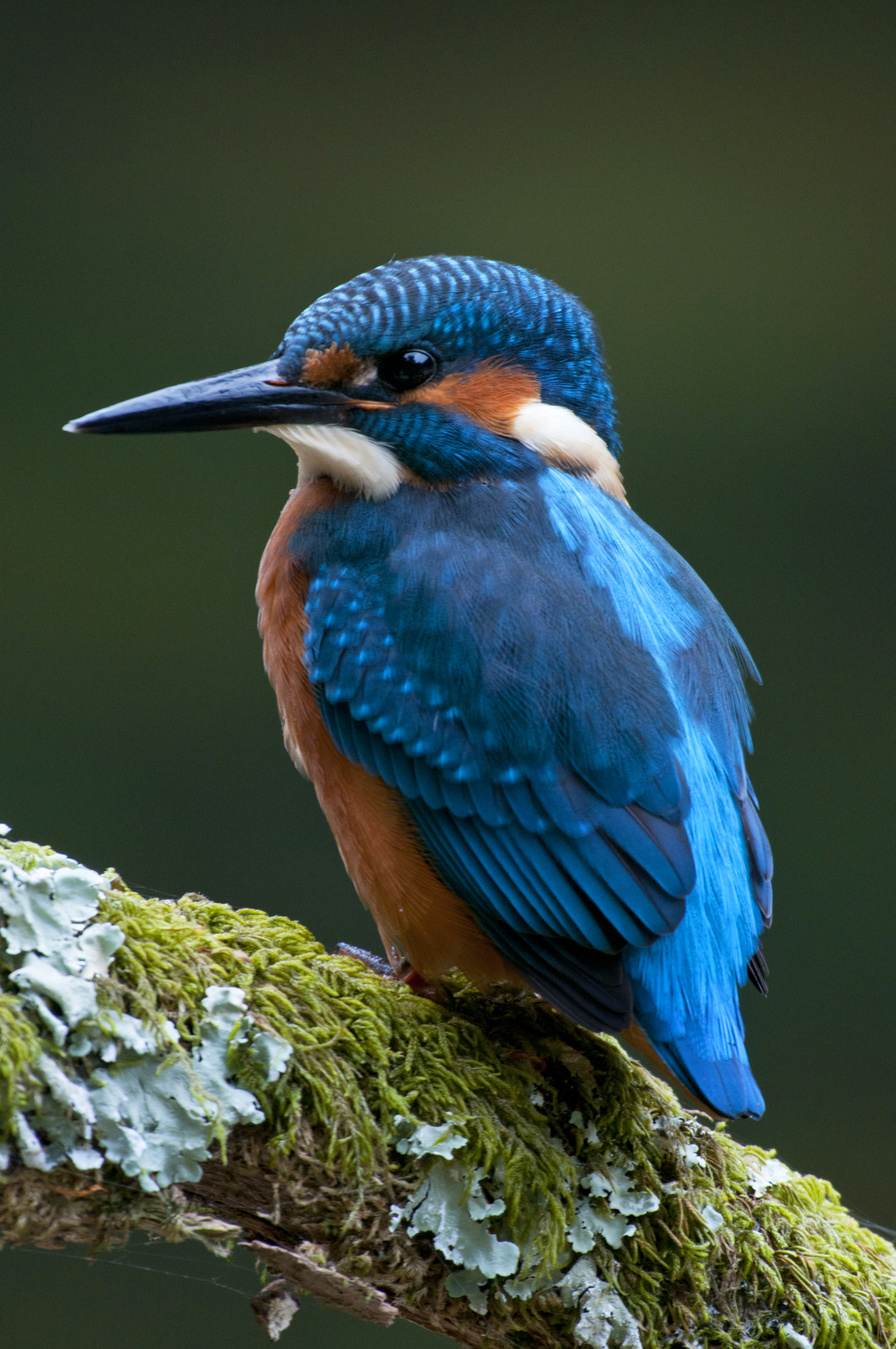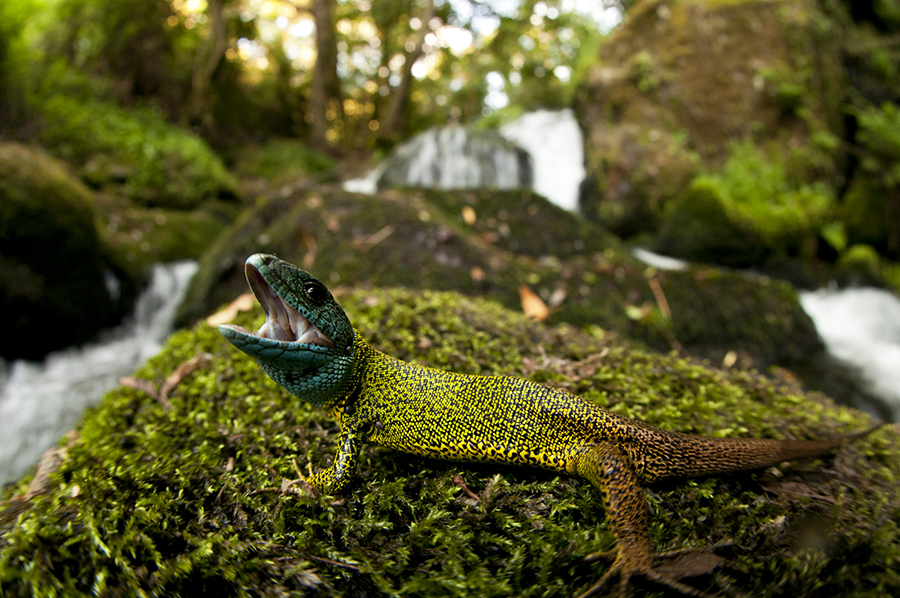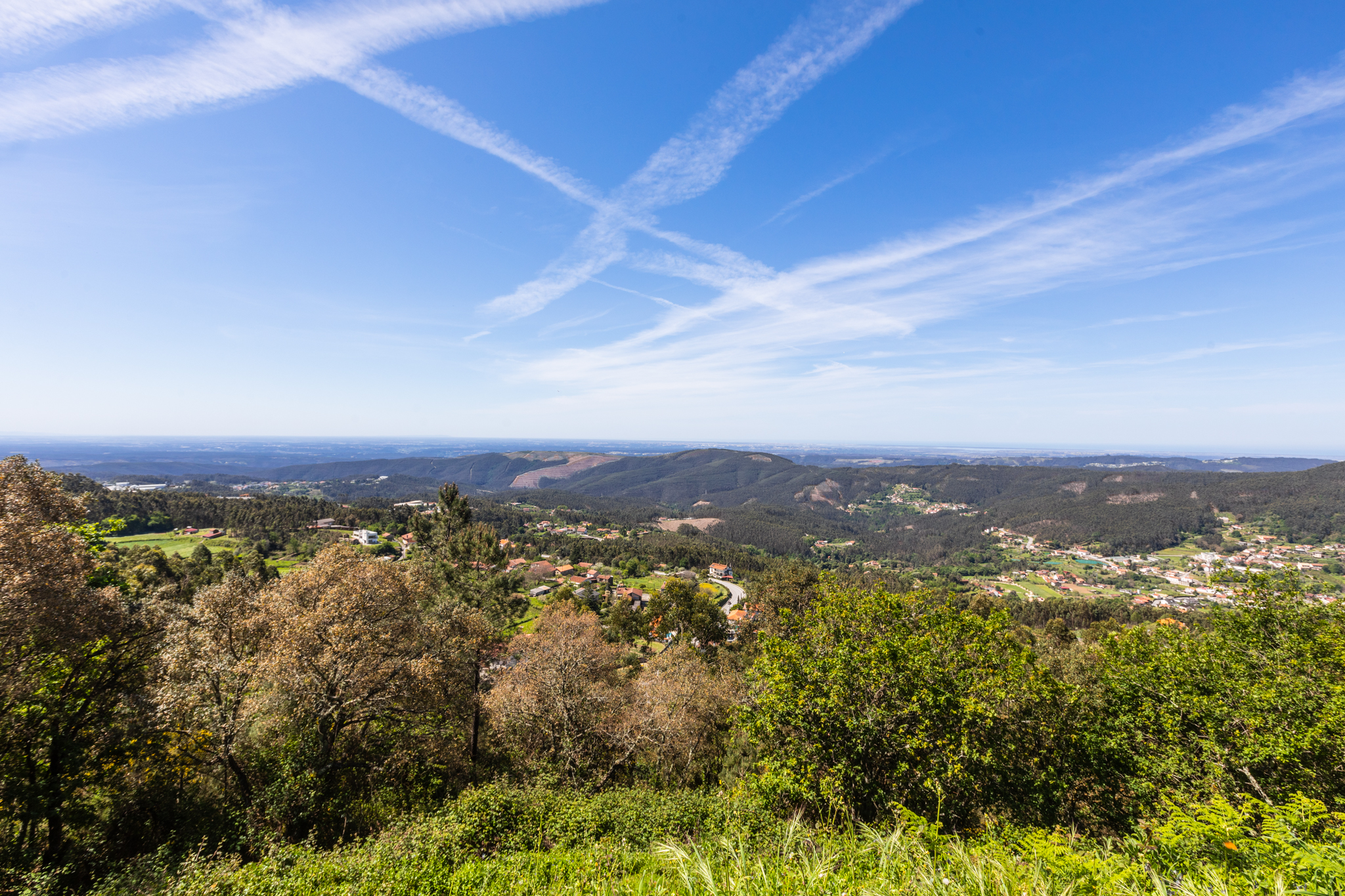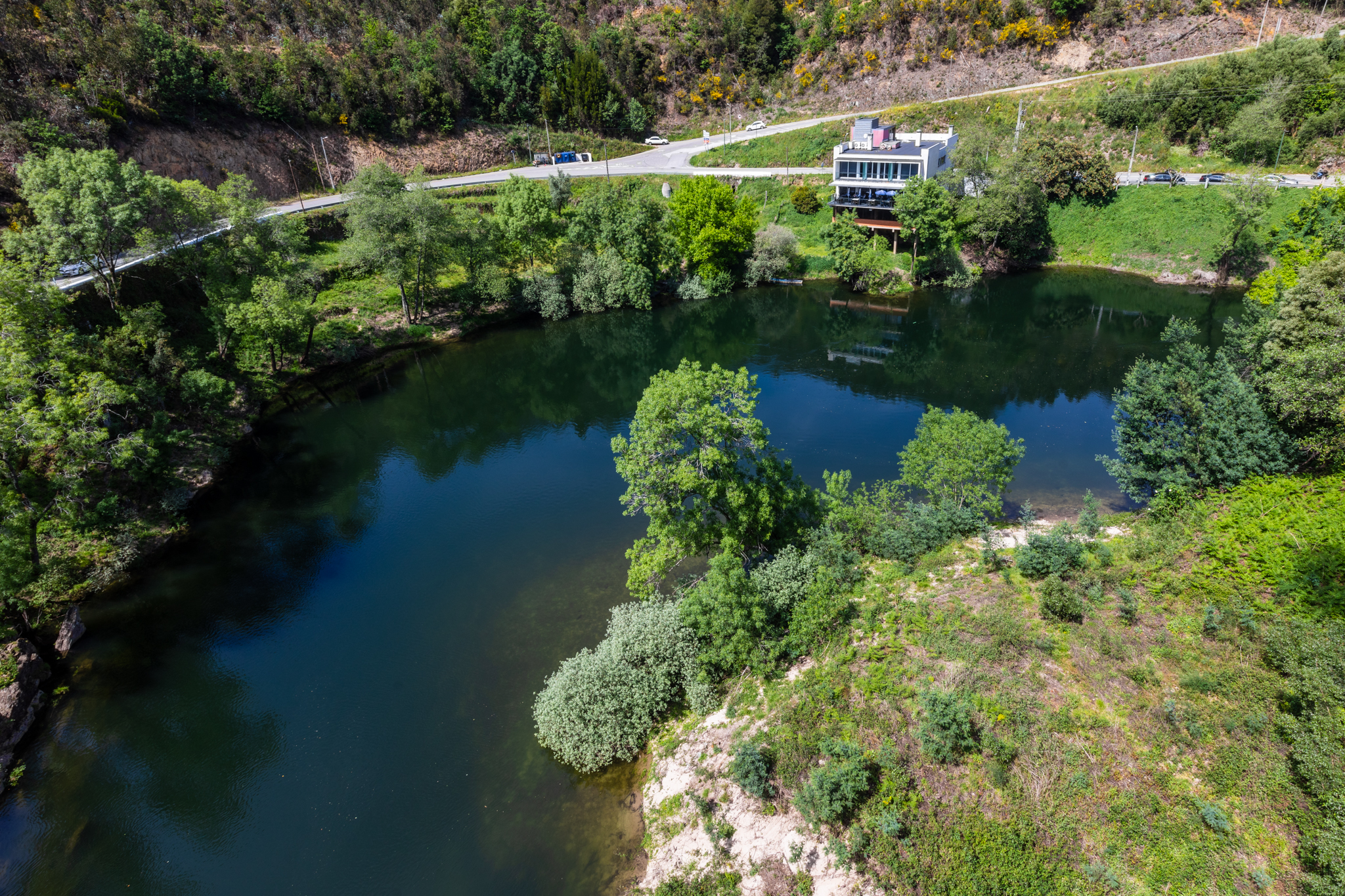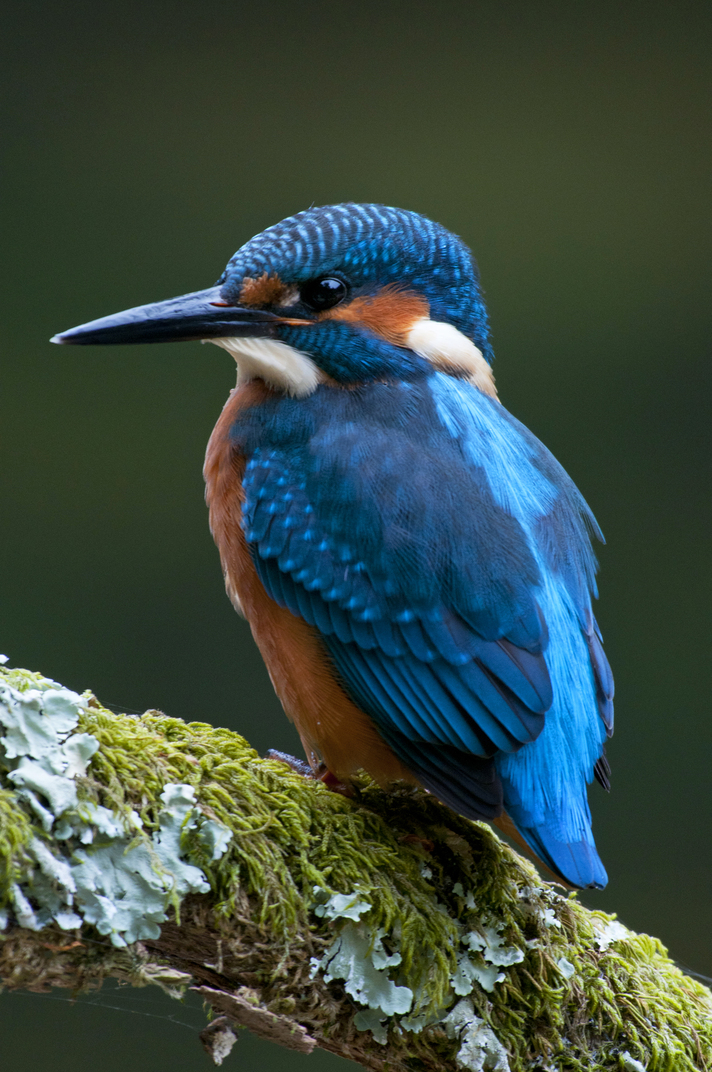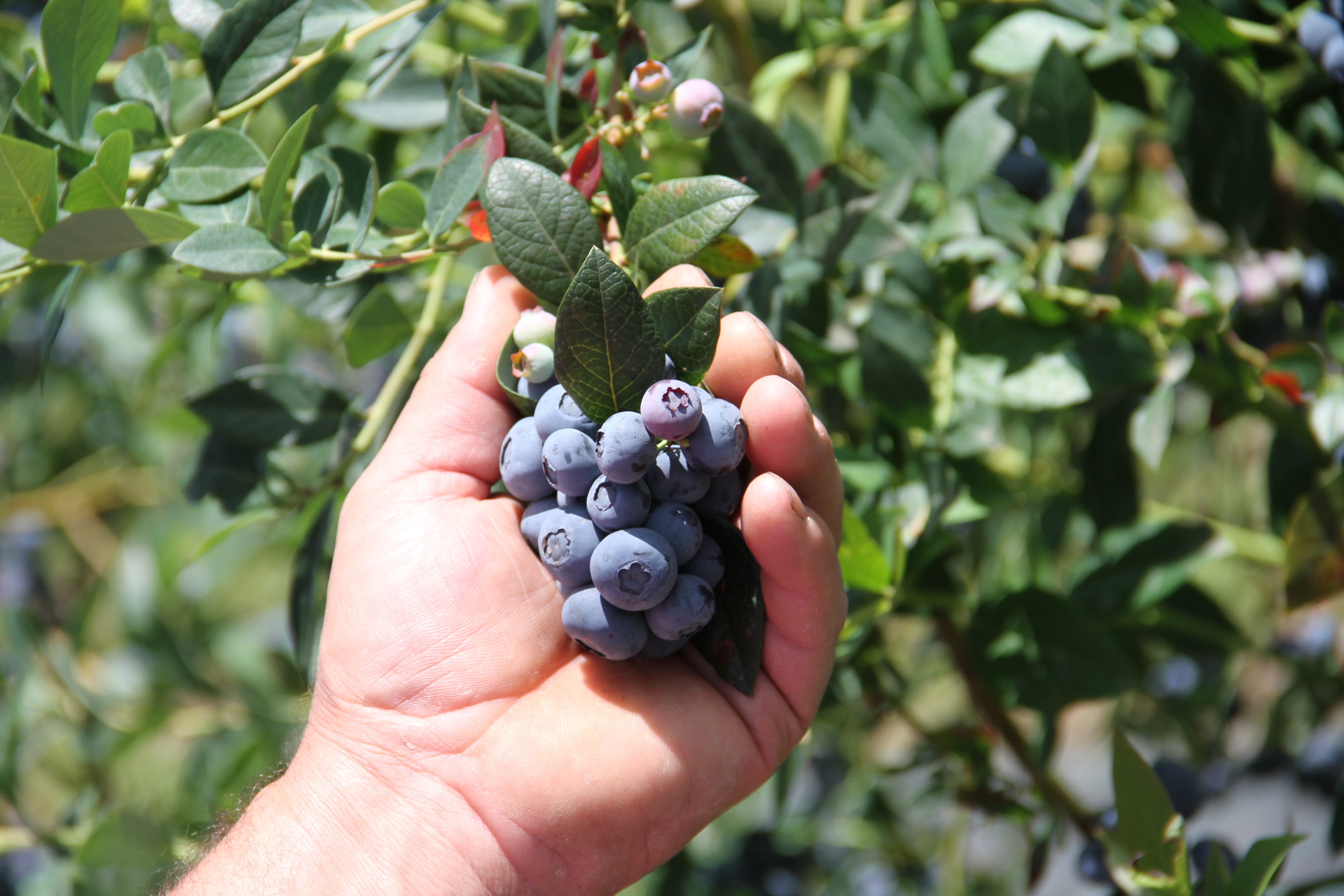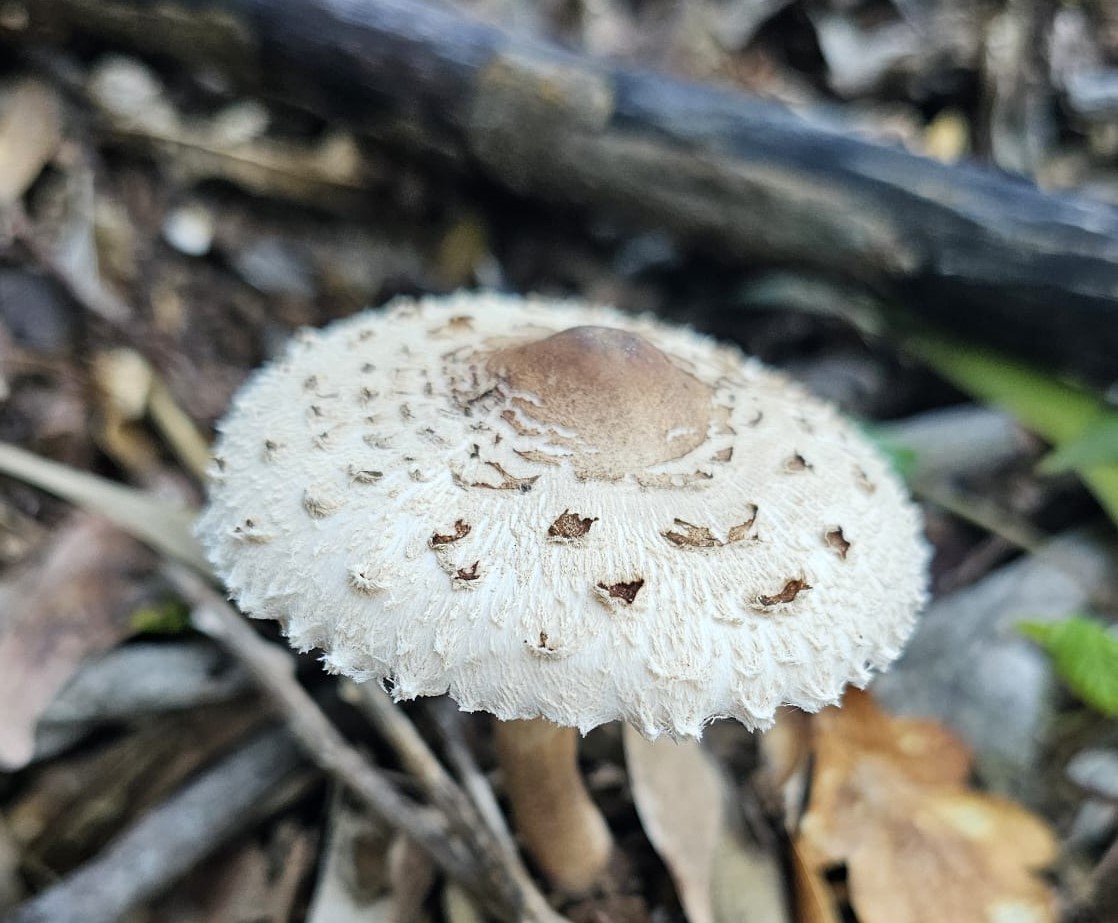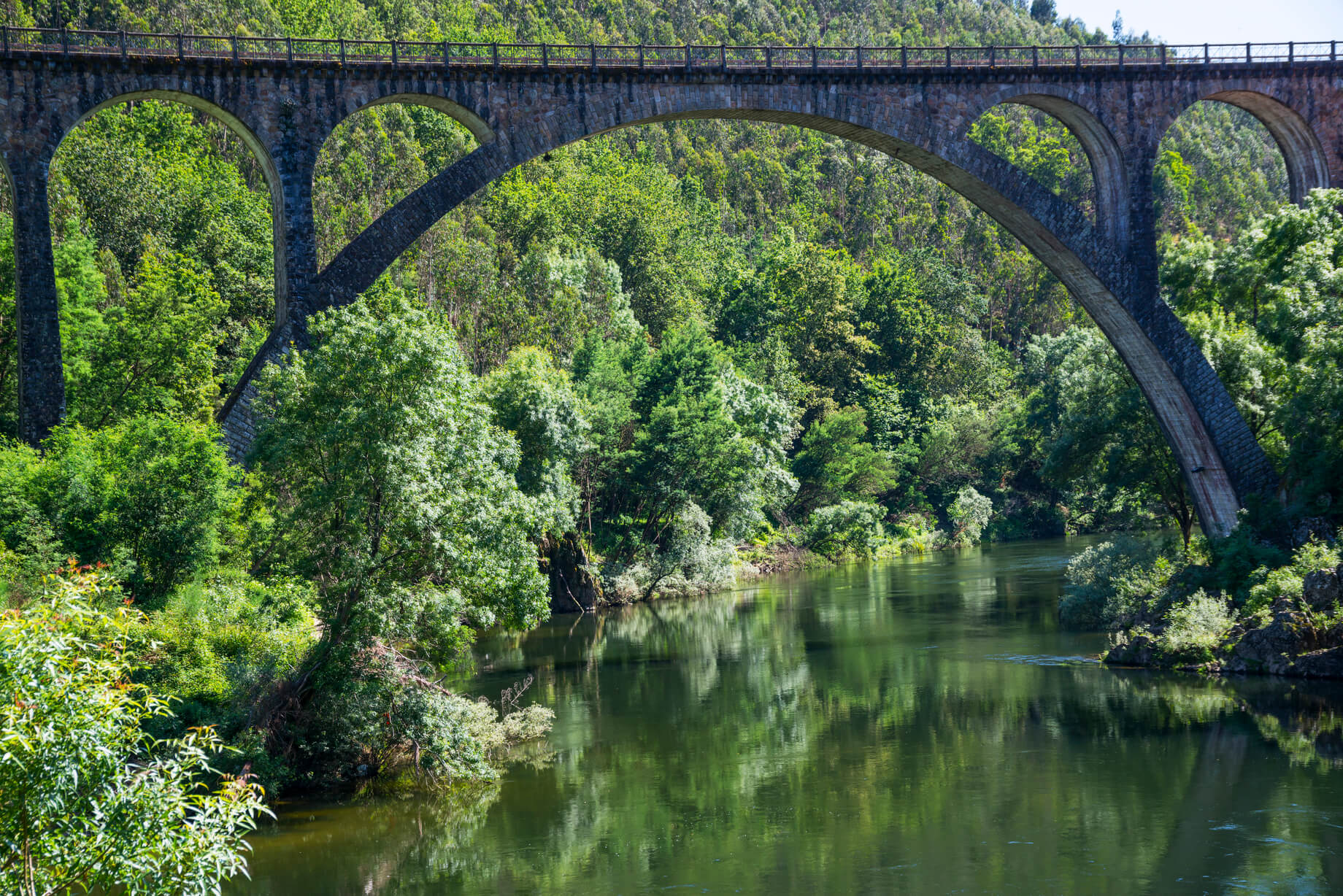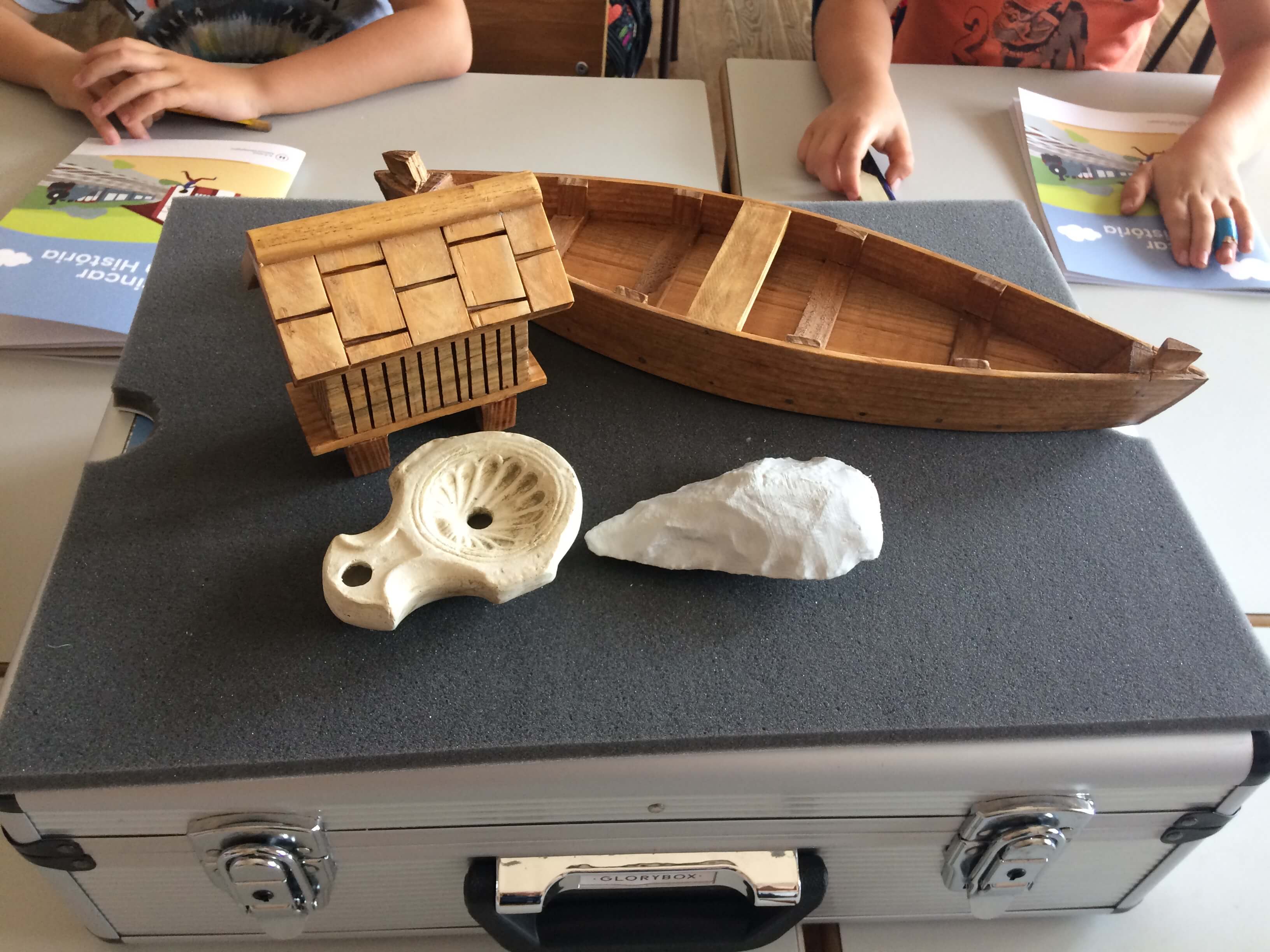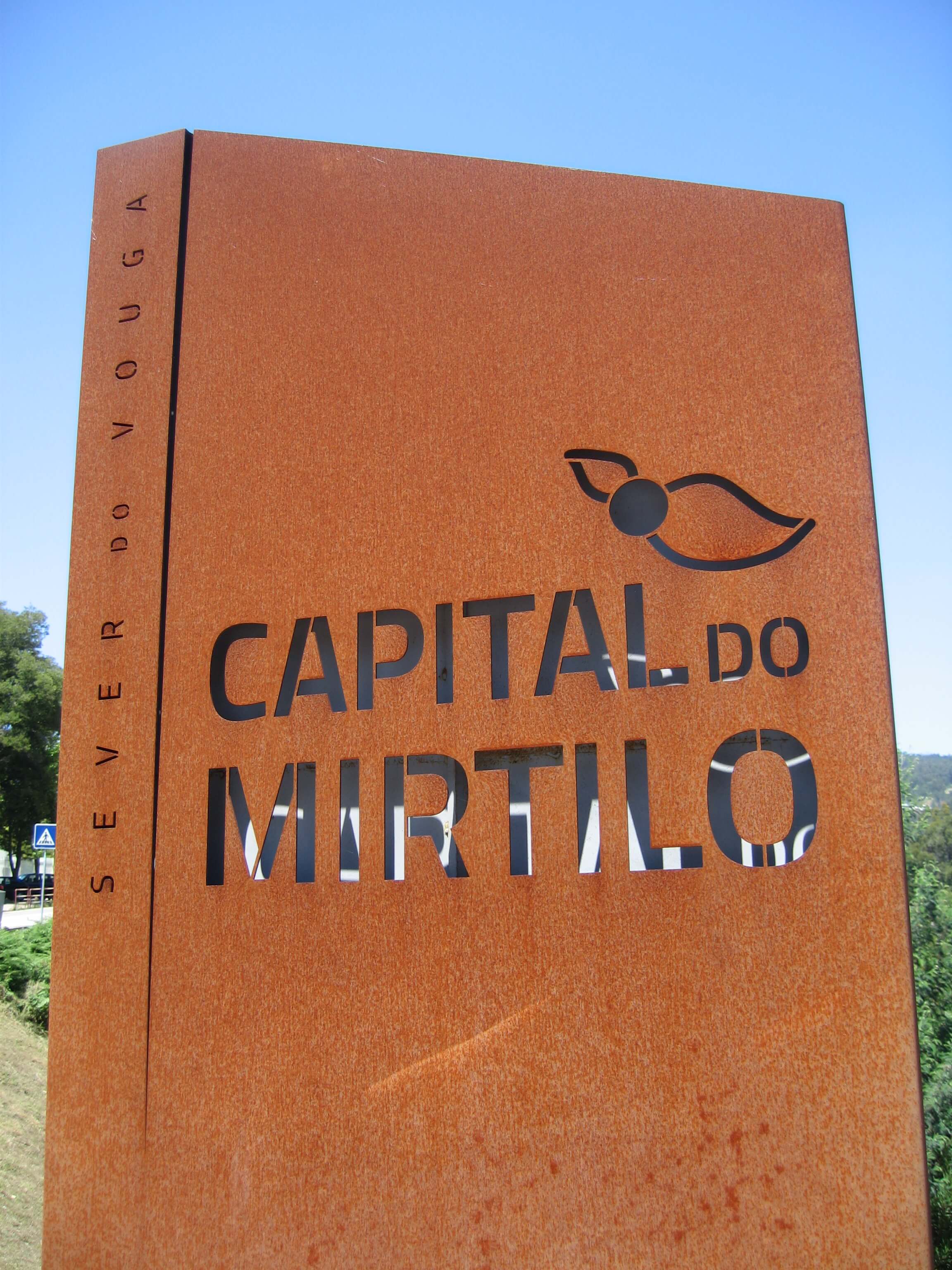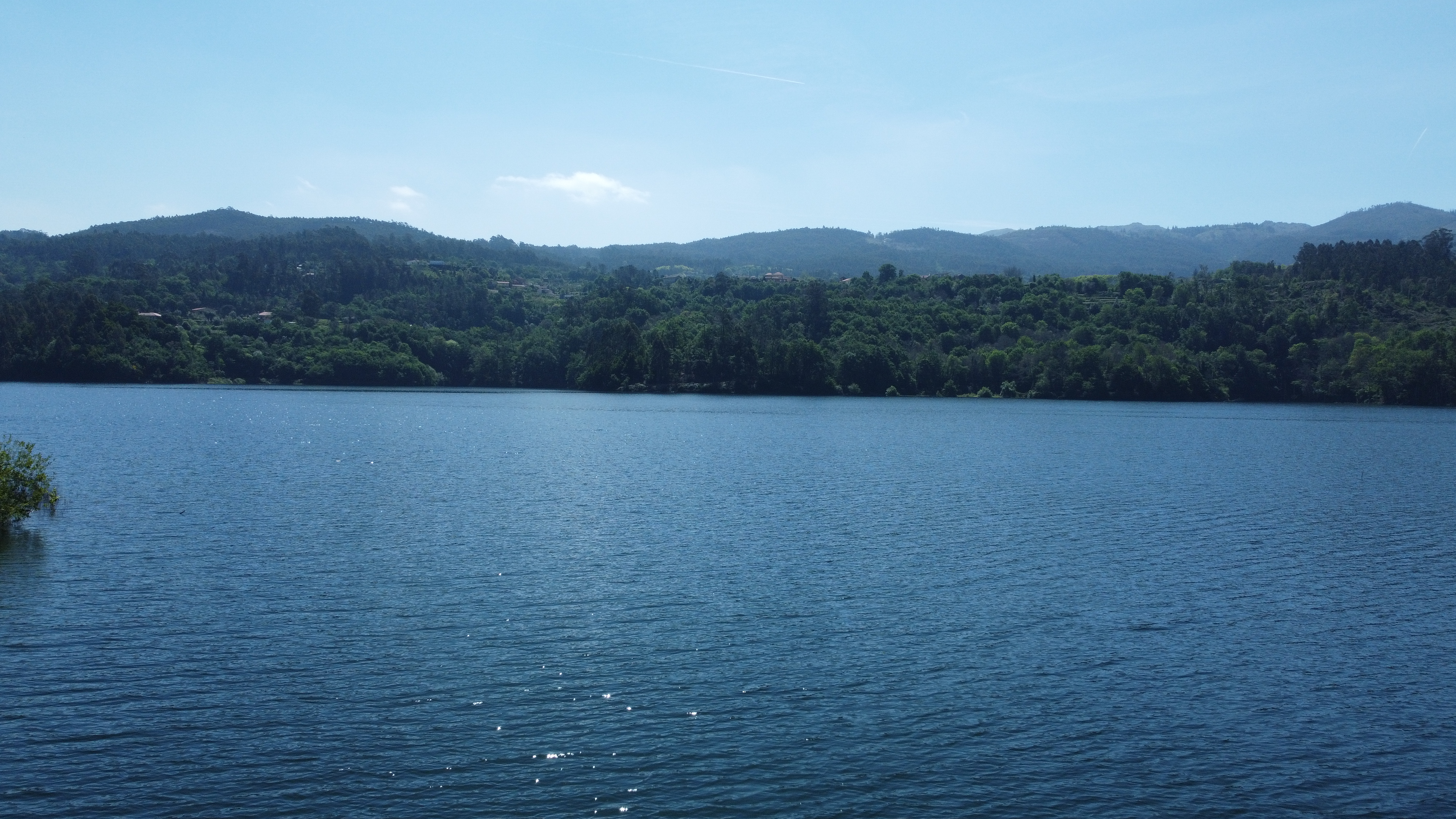Beginning in the Serra da Lapa mountains, the River Vouga makes a long journey of approximately 148 kilometres on its way to the waters of the Ria de Aveiro.
The biodiversity that it harbours and that surrounds it is fascinating and invaluable. The international recognition of this natural value and its importance in the conservation of various wild species has led Sever do Vouga to be included in the list of Sites of Community Interest (SCI) of the Natura 2000 Network.
This SCI covers 2,769 hectares spread over the municipalities of Águeda, Albergaria-a-Velha and Sever do Vouga.
This site is home to several habitats listed in Annex B-I of the Habitats Directive (92/43/EEC) and is considered a biodiversity refuge due to the occurrence of several species of fish, amphibians, reptiles and mammals with internationally protected status.
Don't be surprised to find foam here and there on the vegetation. Some people call it cuckoo spit, but this foam is produced by cicada nymphs, from the Cercopidae family, which cover their entire bodies to protect themselves from desiccation and ward off potential predators. There are insects that, due to their importance and declining populations, have legal protection, such as the blonde cow (Lucanus cervus), the largest beetle in Europe, whose conservation status is Near Threatened, and which is listed in Annex B-II of the Habitats Directive. It only lives one to two months as an adult, in order to reproduce. During most of its life cycle it is a larva, for around three years, feeding on dead matter, which is essential for the regeneration of forests. Other insects, such as butterflies, are widely recognised for their beauty. The shapes and colours of their wings can be very beautiful and interesting. And like other physical characteristics, colours also have functions that depend on the species: sometimes they serve to communicate, helping males and females to recognise each other, and sometimes to avoid predators, for example through camouflage.
One of the butterfly species you can find here is the Euphydryas ourina, which is listed in Annex II of the Habitats Directive.
Amphibians are harmless animals that are extremely sensitive and vulnerable to disturbances in their environment. When faced with a threat, they choose to flee. This group of animals includes toads, frogs, turtles, salamanders and newts.
There are a large number of species which, as their name suggests, have a double life, since during their life cycle they alternate between aquatic and terrestrial or semi-aquatic phases. Among the urods, note the contrasting colours of the yellow-spotted salamander (Salamandra salamandra), the camouflage of the marbled newt (Triturus marmoratus) and the orange belly of the orange-bellied newt (Triturus boscai). The marbled newt is listed in Annex IV of the Habitats Directive. Let's start with one that has a very peculiar name, the common toad (Alytes obstetricans), listed in Annex B-II of the Habitats Directive. The name comes from the active role the male plays in caring for his young, much like a human midwife. After the female lays her eggs in a puddle or pond, the male takes action and fertilises the eggs. He then wraps them around his hind legs until it's time for the tadpoles to hatch. At this point, the male takes care of the tadpoles, protecting them from predators, for example. The Iberian frog (Rana iberica), another example of an anuran, is also included in the Annex due to its fragility and biological importance. The common toad (Bufo bufo) occurs in a wide variety of places with diverse conditions, as it has no major ecological restrictions. It can be seen in wet or dry areas, open or with dense vegetation, in natural or cultivated environments or in the vicinity of inhabited areas. But where can you observe amphibians? Due to their dependence on aquatic environments, especially during reproduction and the larval stage, they are usually found in places with high humidity levels and available water. We can find species from two of the current orders of reptiles: Testudines (terrapins and turtles) and Squamata (snakes and lizards). To give some examples, let's start with the Iberian lizard (Podarcis hispanica), known as the sardanisca, with very variable colour patterns between individuals of the same species. It is relatively abundant and easy to spot, sharing, as long as some distance is maintained, part of the outdoor areas usually frequented by people, such as gardens. The bush lizard (Psammodromus algirus) is also a very common species. Its brownish body is characterised by a pair of light longitudinal stripes on each side of its flanks. During breeding, in spring, sexual dimorphism is accentuated. Males turn orange on the sides of the head and throat. They may also have lime-green dapples and small bluish ocelli scattered along their flanks. These exuberant colours serve to win over their partners!
And among the lizard-like reptiles, we can't fail to mention the sardar (Lacerta lepida). It is the largest of them all and can reach 80 cm in length. But sometimes it faces a threat, opens its mouth and hisses, even jumping at the potential enemy. It has a very showy colour pattern along its back, with a contrast between bright green and black. On the flanks, it has blue ocelli, edged in black. In this case, the male can be distinguished from the female by having a considerably larger head. It has Near Threatened conservation status, which means that its survival is also delicate. Commonly known as the lycra, the Anguis fragilis looks like a snake, but it's not a snake. After all, what is the lycra? Despite its serpent-like appearance, the gecko is a lizard, but one without limbs! The body has a smooth appearance. The head and tail can hardly be distinguished from the rest of the body. As with other lizards, it has the ability to drop its tail when it feels threatened, so that it has the chance to run away. Although it is the subject of myths and popular beliefs, it is a harmless animal. Here are examples of some of the snakes that live here. Let's start with the best known, the rat snake (Malpolon monspessulanus). It is the largest ophidian in Europe and can grow to over 2 metres. It has large eyes and prominent supraocular scales, giving it a slightly frightening appearance. And, as the name suggests, it feeds mainly on mice and other rodents, but not only. A variety of small mammals, birds and reptiles, including other snakes, form part of its diet. It is an ecologically generalist species that has adapted to the changes made to the landscape by human beings and can occur in more urban areas. Because of this proximity, many individuals are run over or deliberately killed by people. Warning! It has venom... However, as it has inoculating structures in a posterior position, it is unable to inoculate venom as a defence, using it only to facilitate the digestion of its prey. So even if it accidentally bites a human being, it can't normally inoculate the venom in this way. The name of the viperine water snake (Natrix maura) also tells us what this species needs: water. It lives near water sources, is a good swimmer and depends on the aquatic environment for food. The ladder snake (Elaphe scalaris) is another example of an animal with a bad reputation, but which poses no danger to humans. In this case, the name has a different reason, as it is related to the dorsal colouration of the juveniles, which has two dark lines along the body connected by transverse lines, resembling a ladder. Curiously, it likes to climb. It is also a victim of being run over, as it seeks out the heat trapped in road tarmac to warm itself up at night.
Now listen to the birds. For example, the red-headed leafhopper (Locustella luscinioides), which owes its name to its characteristic song, a continuous insect-like trill. It is one of several species of great concern and has been given the conservation status Vulnerable. Another bird that can be found by sound is the great spotted woodpecker (Dendrocopos major), whose sound produced by the tapping of its beak on tree trunks is a sign of its presence. Hearing and sight are the most important and most developed senses in birds, especially nocturnal birds. By observing a bird closely, you can learn some of the species' characteristics, such as what it eats and the type of flight it makes. The size of the beak in relation to the size of the body, its shape and robustness give us information about its diet. Take the decoy (Serinus serinus) and the greenfinch (Carduelis chloris), for example: with their strong, conical beaks, they are particularly adept at breaking grains and seeds. If it's a bird that feeds on small invertebrates found on the ground and in trees, its beak will be thin, to act as tweezers and catch small insects and larvae, as is the case with the black tit (Parus ater). As for birds that hunt prey in flight, the evolution of their beaks has made them small and their mouths relatively large. The barn swallow (Hirundo rustica) is an example of this that we can see in its swooping flights at dusk while feeding. A powerful, hook-shaped beak is useful for tearing apart skin, tendons and muscles. This is the case with the round-winged eagle (Buteo buteo) and the barn owl (Tyto alba). The barn owl belongs to the group of nocturnal birds and is therefore unlikely to be seen. It helps to control rodent populations. Birds with a diversified diet, on the other hand, do not have a beak that specialises in one type of food, as is the case with the jay (Garrulus glandarius) and the black grouse (Corvus corone), species that are listed in Annex II of the Birds Directive. Wings and other features are related to the way birds fly, in order to reduce wind resistance and thus energy expenditure. If it's a bird that flies fast, its wings will be long and tapered, as is the case with the black swift (Apus apus). The magpie (Pica pica), which is listed in Annex II of the Birds Directive, has shorter, rounder wings because it flaps its wings more slowly. Some birds are easily recognisable due to their daily proximity to humans, such as the domestic pigeon (Columba livia domestica) and the common sparrow (Passer domesticus). Both have a reference to domestic in their name, which means that, over generations, they have evolved in close proximity to humans and have accumulated differences related to this proximity, moving away from the characteristics of their wild ancestor. An example of a species that shows sexual dimorphism is the blackbird (Turdus merula), where the males are completely black, with an orange beak and eye contour, while the females are brownish. Blackbirds are also easy to spot due to their proximity, which can be observed in urban areas, and because they are often found at ground level, where they feed. It is also listed in Annex II of the Birds Directive. In other species, dimorphism is less noticeable. In the case of the red-breasted nuthatch (Erithacus rubecula), the difference is in size, with the male usually being more corpulent than the female. Most of the birds that live here are sedentary, meaning they stay all year round. On the other hand, the Barn Swallow is summer resident, which means that it can be seen throughout the summer, while the lugger (Carduelis spinus) is a wintering species.
Apart from the fact that most of these species are also more active at the beginning and end of the day, or even at night, they are very elusive animals. They prefer not to be seen. That's why we also look for signs of their activity as a way of getting to know them better. For example, analysing otter (Lutra lutra) faeces allows us to find out more about the species' eating habits, or fox (Vulpes vulpes) footprints which give us information about their preferred locations. Real detective work! Also among mammals, some species have a conservation status of concern and a high legal protection status, such as the otter mentioned above, which is flagged as Near Threatened, and the water mole (Galemys pyrenaicus), Endangered. These species are listed in Annex II and IV of the Habitats Directive and, if nothing is done, these species, like others, could become extinct. Rodents make a characteristic sound while feeding. They gnaw on relatively hard things and, if you're on the lookout, you might be lucky enough to spot a red squirrel (Sciurus vulgaris) or a water rat (Arvicola sapidus), which feeds mainly on the stems and leaves of plants that grow on river banks. The latter can be preyed upon by several species, some of whose predators are otters, foxes and the redshank (Herpestes ichneumon), the latter of which is listed in Annex V of the Habitats Directive. Why are various species of animals more active at dawn, dusk or at night? Because of the environmental conditions and the greater chance of finding food and escaping potential predators. This is the case with the nocturnal genet (Genetta genetta), which is listed in Annex V of the Habitats Directive. When spotted, they are often mistaken for a cat, but they are slimmer, have a thick tail with alternating dark and light rings, a tapered snout and white spots under their eyes. The bat is another example of a mammal that prefers to live during times of day with less light. In this area you can find some species, for example the dwarf bat (Pipistrellus pipistrellus), which is the smallest bat in Europe. They can be seen near urban lighting points, where the insects they feed on are concentrated. Then there's the water bat (Myotis daubentonii), which feeds almost exclusively on insects that land or fly over the water. Both species are included in Annex IV of the Habitats Directive.
In the river's waters, we can find the boga (Chondrostoma polylepis), the bordalo (Rutilus alburnoides), the lamprey (Petromyzon marinus), the river lamprey (Lampetra planeri), the ruivaco (Rutilus macrolepidotus), the shad (Alosa alosa) and the savelha (Alosa fallax), all of which are included in Annex II of the Habitats Directive. The river lamprey is a migratory species that deserves attention for several reasons. Firstly, because it is part of the region's traditional cuisine. The Rota da Lampreia e da Vitela (Lamprey and Veal Route) event is organised every year and is much sought after by connoisseurs. Secondly, because of the lamprey's somewhat strange habits in human eyes, as it is an animal that stays buried for most of the time! And, as if that weren't enough, it doesn't eat as an adult. But more importantly, it is Critically Endangered and the River Vouga is one of the few places where it has been confirmed to occur. Among the main threats to these migratory species are interventions to regularise the watercourse, intensive afforestation in the vicinity and pollution.
Also included in Annex B-II and IV of the Habitats Directive are invertebrates such as the river mussel (Unio crassus). The River Vouga is also important for the conservation of reptiles and amphibians that depend directly on its waters for survival, such as the water lizard (Lacerta schreiberi) and the Lusitanian salamander (Chioglossa lusitanica). Both species are endemic to the Iberian Peninsula, have Near Threatened status and are listed in Annex II and IV of the Habitats Directive.


